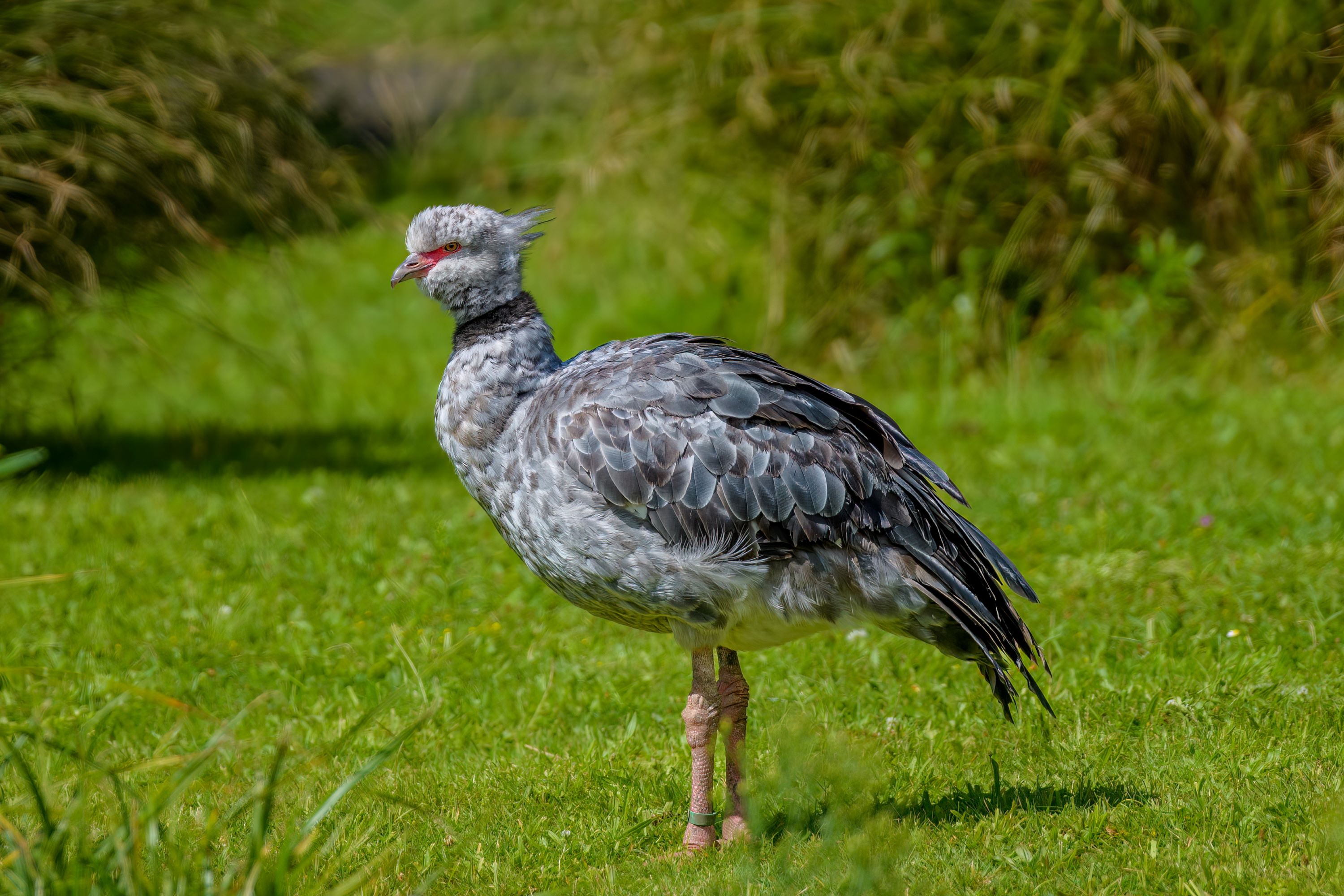
The Anhimidae Family: A Unique Assembly of South American Waterfowl
Introduction
The bird family Anhimidae, comprising a small group of large birds native to South America, is an intriguing and somewhat less-known family in the avian world. This family, consisting of three species – the Horned Screamer (Anhima cornuta), the Southern Screamer (Chauna torquata), and the Northern Screamer or Black-necked Screamer (Chauna chavaria) – exhibits unique characteristics and ecological roles in their native habitats.
Distinctive Traits of the Anhimidae Family
The Anhimidae family, encompassing a unique lineage of waterfowl, is distinguished by several remarkable characteristics that set them apart in the avian world. Known colloquially as 'screamers' due to their loud and distinctive vocalizations, these birds are easily identifiable by both their calls and their impressive physical stature. Species within the Anhimidae family are notably large, with their body length typically ranging from 35 to 40 inches, making them some of the more imposing figures in their habitats.
In terms of physical appearance, screamers possess long, sturdy legs that not only support their sizeable bodies but also facilitate efficient movement through their wetland environments. Their wings are expansive and powerful, reflective of their capability for strong, albeit not particularly agile, flight. The plumage of Anhimidae species tends to be dominantly grey or blackish, providing them with a subtle yet commanding presence. This coloration serves as effective camouflage within their natural habitats, blending seamlessly into the marshes and reed beds they frequent.
One of the most distinctive features of screamers is their robust, hooked bills, which are highly adapted for their herbivorous diet. These strong bills are ideal for tearing and grasping vegetation, a primary component of their diet. Moreover, screamers are equipped with unique spurs on their wings. These spurs, which can be up to 2 inches long, serve as a formidable defense mechanism against predators and are also utilized during territorial disputes with other birds. The presence of these spurs is a rare trait among birds and is indicative of the screamers' evolutionary adaptation to their specific ecological niches.
Furthermore, the vocalizations of screamers are not just noteworthy for their volume but also for their role in communication. Their calls, which can be heard over considerable distances, are essential in maintaining contact between individuals, especially in dense vegetation where visual contact is limited. These vocalizations vary from loud, piercing screams to softer, more melodious calls, and play a crucial role in social interactions within the species, particularly during mating and nesting periods.
In summary, the Anhimidae family's members are distinguished by their large size, powerful vocalizations, long legs, and large wings, as well as their unique grey or blackish plumage and wing spurs. These characteristics not only define their physical appearance but also reflect their adaptation to and interactions with their environment, making them a fascinating subject of study in the field of ornithology.
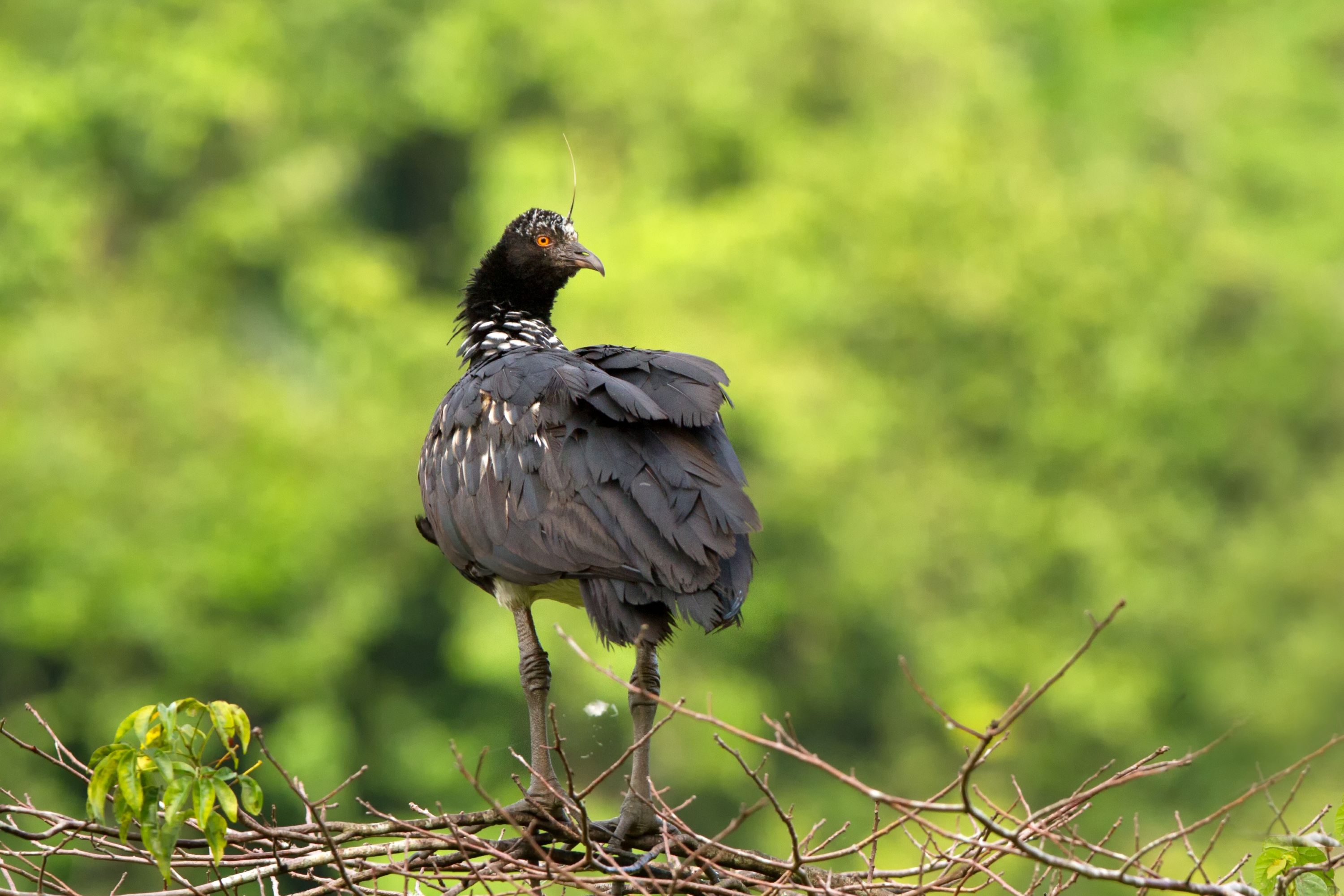
Habitat and Behavioral Ecology of Screamers in South America
The Anhimidae family, commonly known as screamers, are native exclusively to the diverse and vibrant ecosystems of South America. These birds exhibit a strong preference for wetland habitats, a choice that is intricately linked to their survival and breeding strategies. Screamers typically inhabit a broad range of wetland environments, from the expansive marshes teeming with lush vegetation to the swampy areas that offer a mix of water and land. They are also commonly found along the shores of lakes, where the interface between land and water creates a rich habitat for a variety of plant and animal life. These environments provide screamers with essential resources, including food, nesting sites, and protection from predators.
In terms of their adaptation to these habitats, screamers are equally adept at navigating both terrestrial and aquatic settings. Their long legs are not only useful for walking on soft, uneven ground typically found in marshes and swamps but also facilitate wading in shallow waters. Screamers are known for their swimming abilities, using their large feet to paddle through water, a skill that is crucial for foraging and escaping potential threats. This dual adaptation underscores their ecological role as a bridge between aquatic and terrestrial ecosystems.
Behaviorally, screamers are highly sociable birds, often observed in pairs or small family groups. This social structure plays a significant role in their survival, as it aids in foraging, nesting, and defense. Screamers are particularly known for their vocalizations, which are a defining characteristic of the family. Their calls, which range from loud, piercing screams to a series of echoing honks, serve several purposes. During the mating season, these calls become more frequent and intense, used by males to attract females and by pairs to strengthen their bonds. The calls also function as an alarm system, alerting other birds to potential dangers or intruders in their territory. The ability to communicate over long distances is crucial in the dense vegetation of their habitats, where visual contact is often obstructed.
Additionally, screamers exhibit a unique approach to nesting and rearing their young. They build large, sturdy nests in the dense reed beds or floating vegetation, which provide safety and seclusion for their eggs and chicks. The social nature of screamers extends to their parenting, with both members of a pair actively involved in incubating eggs and caring for the offspring.
In summary, the habitat and behavior of screamers in South America are a testament to their adaptation to the wetland ecosystems. Their ability to thrive in both aquatic and terrestrial environments, coupled with their sociable nature and distinctive vocalizations, make them an integral part of the biodiversity in these regions. Understanding the habitat preferences and behavioral patterns of screamers offers valuable insights into the complex dynamics of wetland ecosystems and the diverse life forms they support.
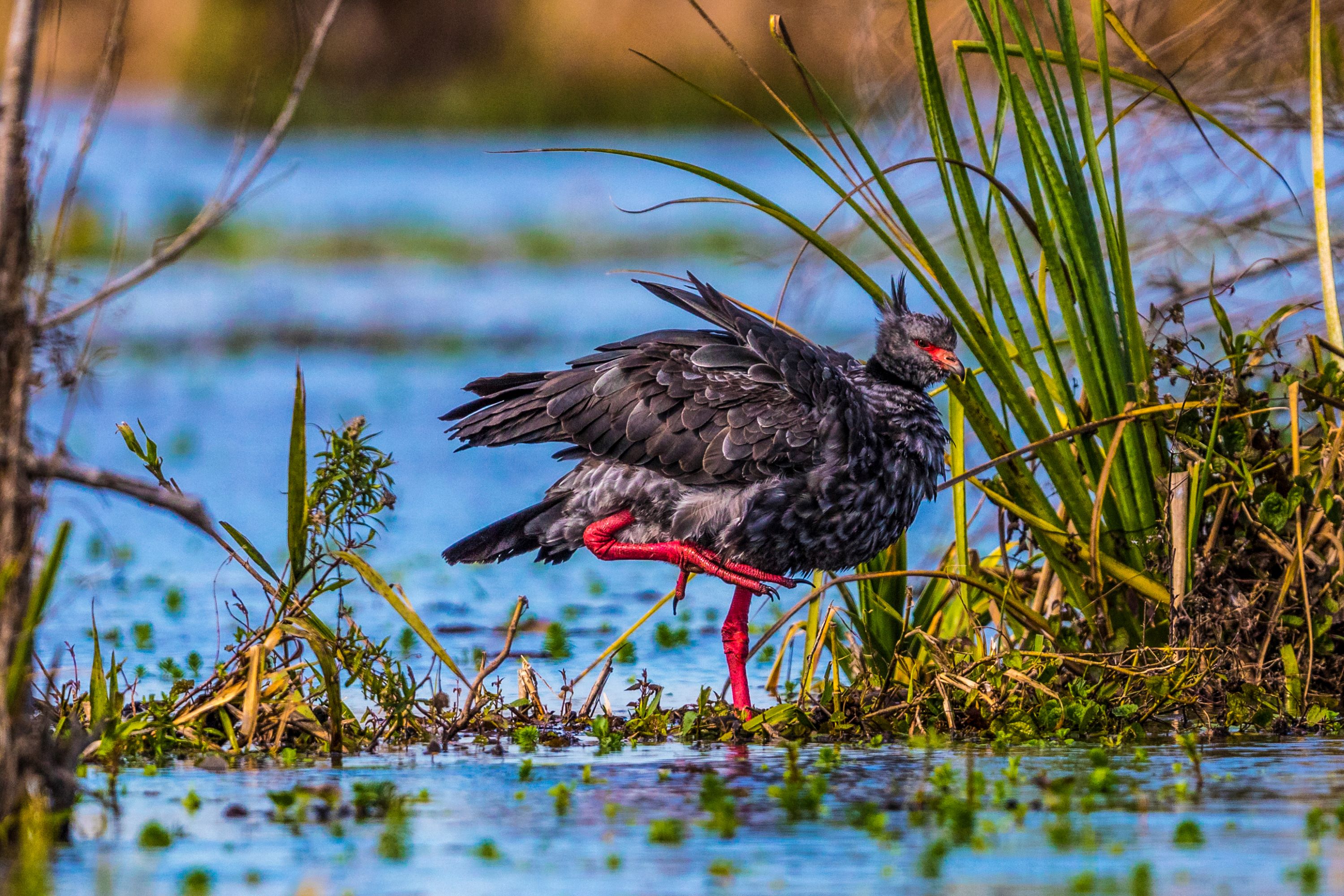
Dietary Preferences and Foraging Techniques of Screamers
In the diverse wetland ecosystems of South America, the screamers, belonging to the Anhimidae family, display a foraging behavior and diet that are pivotal to their survival and the ecological balance of their habitats. These birds, adapted to a herbivorous lifestyle, primarily feed on a variety of plant materials found abundantly in their marshy homes. Their diet mainly consists of leaves, stems, and a significant portion of aquatic vegetation, which provides the necessary nutrients for their large size and energy requirements.
Screamers are particularly skilled at foraging in shallow waters, a trait that allows them to exploit the rich aquatic plant life in marshes and along lake shores. They are often observed wading through water, using their long legs to navigate the wetlands effortlessly. In these environments, they feed on a range of aquatic plants, plucking leaves and stems with their robust, hooked bills. This method of foraging is highly efficient and enables them to access the freshest and most nutritious parts of the plants.
In addition to their aquatic foraging, screamers also venture onto land, where they graze on grasses and other terrestrial vegetation. Their strong bills come into play here as well, adeptly tearing and grasping plant matter. This versatility in feeding habits allows screamers to take full advantage of the resources available in their habitats, making them proficient foragers who can adapt to the changing availability of food sources.
The feeding habits of screamers are not only crucial for their sustenance but also play an integral role in the maintenance of their wetland ecosystems. By consuming large quantities of vegetation, they help regulate plant growth, preventing overgrowth that can lead to ecological imbalances. This regulation is essential for preserving open waterways and ensuring the health of the wetland, benefiting a myriad of other species that share these habitats.
Moreover, screamers contribute to the wetland's nutrient cycle through their foraging activities. As they feed and move around, they aid in seed dispersal and contribute to the decomposition of plant matter, which in turn helps nourish the soil. This continuous cycle of growth, consumption, and decomposition is vital for sustaining the dynamic wetland ecosystems where screamers thrive.
In summary, the diet and foraging behavior of screamers are deeply rooted in their ecological role within South American wetlands. Their herbivorous diet and efficient foraging strategies not only fulfill their nutritional needs but also contribute to the health and vitality of their natural habitats. Understanding these aspects of screamer ecology sheds light on the interconnectedness of species and their environments, highlighting the importance of conserving natural habitats for the continued survival of diverse wildlife populations.
The Genus Anhima
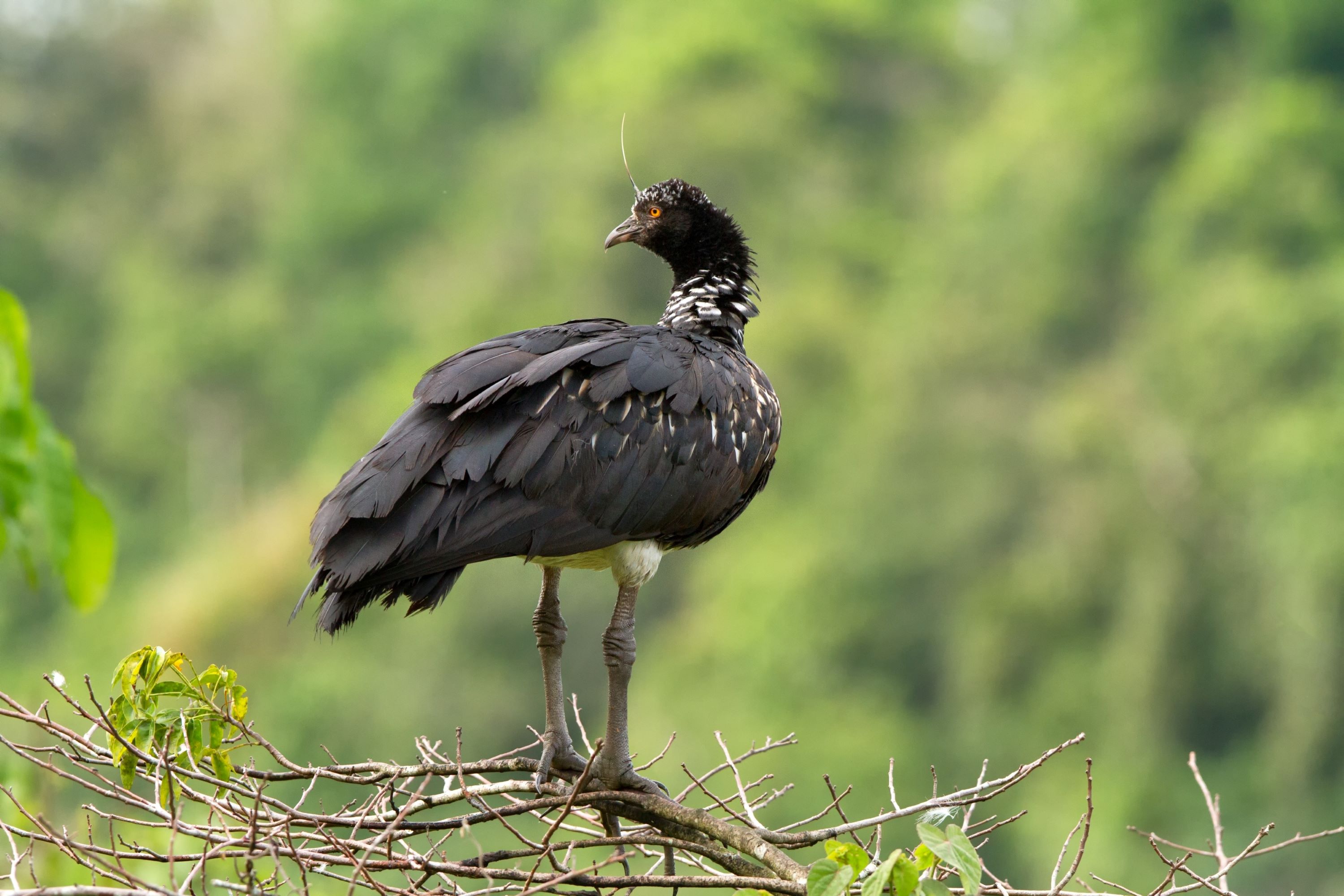
The Horned Screamer (Anhima cornuta)
The Horned Screamer (Anhima cornuta), a distinctive and captivating bird endemic to the Amazon basin, is renowned not only for its striking physical features but also for its significant ecological role within its native habitat. This species, the smallest member of the Anhimidae family, possesses an unmistakable and unique characteristic: a prominent, horn-like structure on its crown. This keratinous, slightly flexible appendage, extending up to six inches, is a hallmark of the species and contributes to its evocative name. The Horned Screamer's physical stature is impressive, typically measuring between 31 to 37 inches in length, with a robust and hefty body, long legs, and large wings, all of which are adapted to its semi-aquatic lifestyle. Its plumage, predominantly a mix of black and white, provides effective camouflage within the lush, green backdrop of the Amazonian wetlands and flooded grasslands, where it predominantly resides.
The Horned Screamer's vocalizations are as notable as its appearance. Known for producing loud, resonant calls that echo through the dense rainforests, these haunting sounds serve as a means of communication with other screamers, particularly relevant during mating seasons and in asserting territorial dominance. The bird’s diet is primarily herbivorous, feeding on a variety of aquatic plants, seeds, and small invertebrates found in its wetland habitat. This diet plays a pivotal role in maintaining the ecological balance of the wetlands, as the Horned Screamer helps regulate plant growth, thereby preventing overgrowth that could disrupt the habitat's delicate ecological equilibrium.
Beyond its dietary habits, the Horned Screamer plays an instrumental role in the biodiversity of the Amazon basin. Its presence and behavior are indicative of the health of its wetland ecosystem, making it a species of interest for conservation efforts. Its adaptation to the fluctuating environments of the Amazon, including its ability to navigate both terrestrial and aquatic terrains, underscores the evolutionary success of this species in a complex and dynamic ecosystem. The Horned Screamer's ecological significance, coupled with its striking physical attributes and unique vocalizations, make it a fascinating subject of study for ornithologists and a bird of considerable interest for avian enthusiasts globally, underscoring the need for ongoing conservation efforts to preserve the rich biodiversity of the Amazon basin.
The Genus Chauna
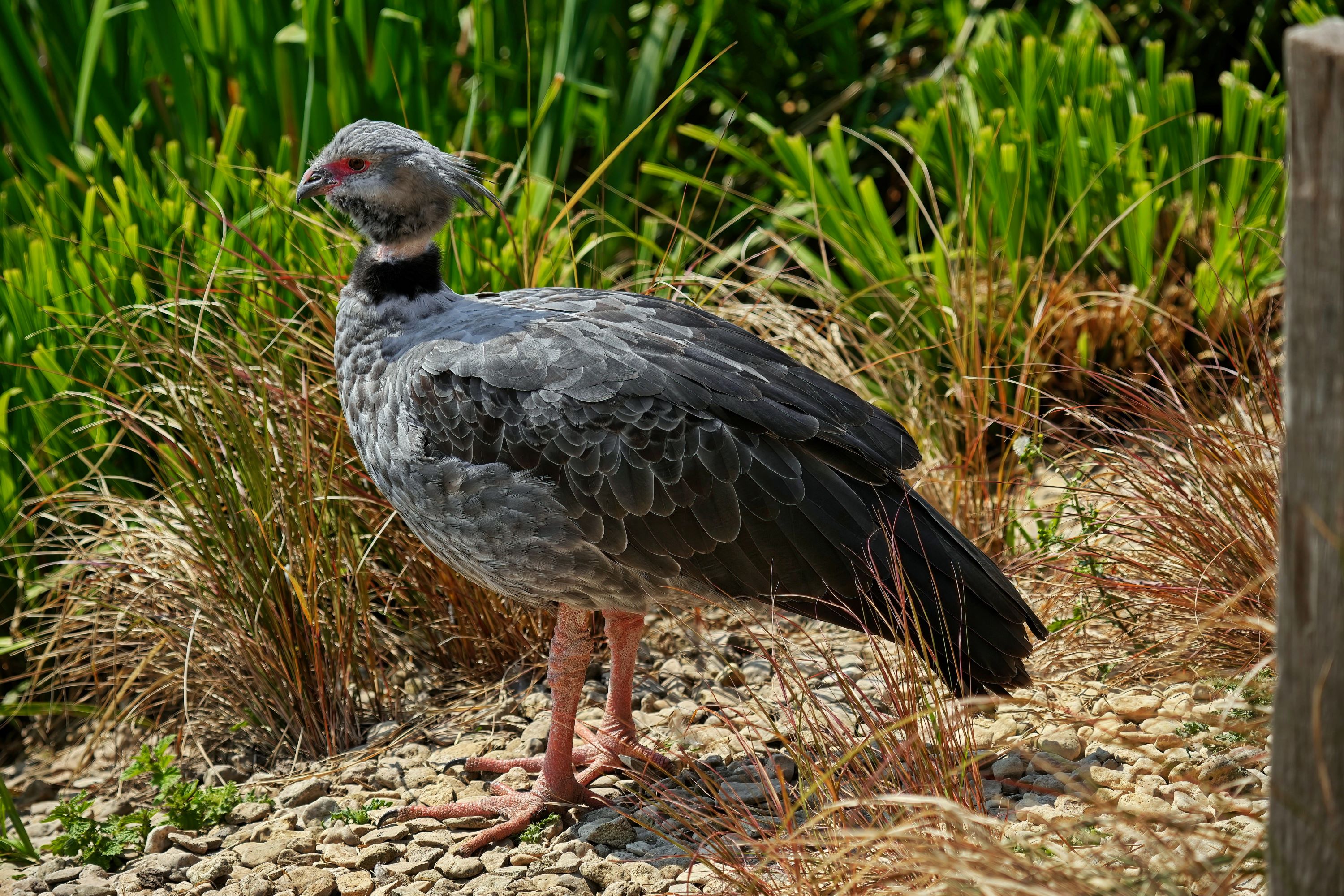
The Northern Screamer (Chauna chavaria)
Screamer, is a distinctive bird endemic to the northern parts of South America, particularly concentrated in the marshlands and riverine habitats of Colombia and Venezuela. This species, while sharing general familial traits with its Anhimidae relatives, boasts unique features that set it apart. Notably, it has a striking appearance marked by a black neck and upper chest, contrasting sharply with the predominantly grey plumage on the rest of its body. This coloration provides effective camouflage in its native wetland habitats, blending in with the shadowy waters and dense vegetation.
Adapted to life in wetlands, the Northern Screamer's habitat preference includes marshy areas and riverbanks, which offer an abundance of food sources and suitable breeding grounds. Its diet primarily consists of a variety of aquatic vegetation, making it a vital component in the ecological balance of its habitat. The bird is often seen foraging in shallow waters, using its strong bill to extract plants. This feeding behavior not only sustains the bird but also plays a critical role in maintaining the health of the wetland ecosystem, as it helps to control the growth of aquatic plants.
Socially, the Northern Screamer is known for its loud and echoing calls, a characteristic feature that aids in communication with other birds over long distances in dense wetlands. This vocalization is particularly important during mating seasons and territorial disputes. In terms of breeding, Northern Screamers are known to form monogamous pairs, with both partners participating actively in nesting and rearing their young. The strong pair bonds and cooperative parenting observed in this species reflect a complex social structure that is crucial for their survival in the dynamic environments of northern South America. The Northern Screamer, with its unique appearance and significant ecological role, highlights the diversity of avian life in the wetlands and underscores the importance of preserving these habitats for the survival of such specialized species.
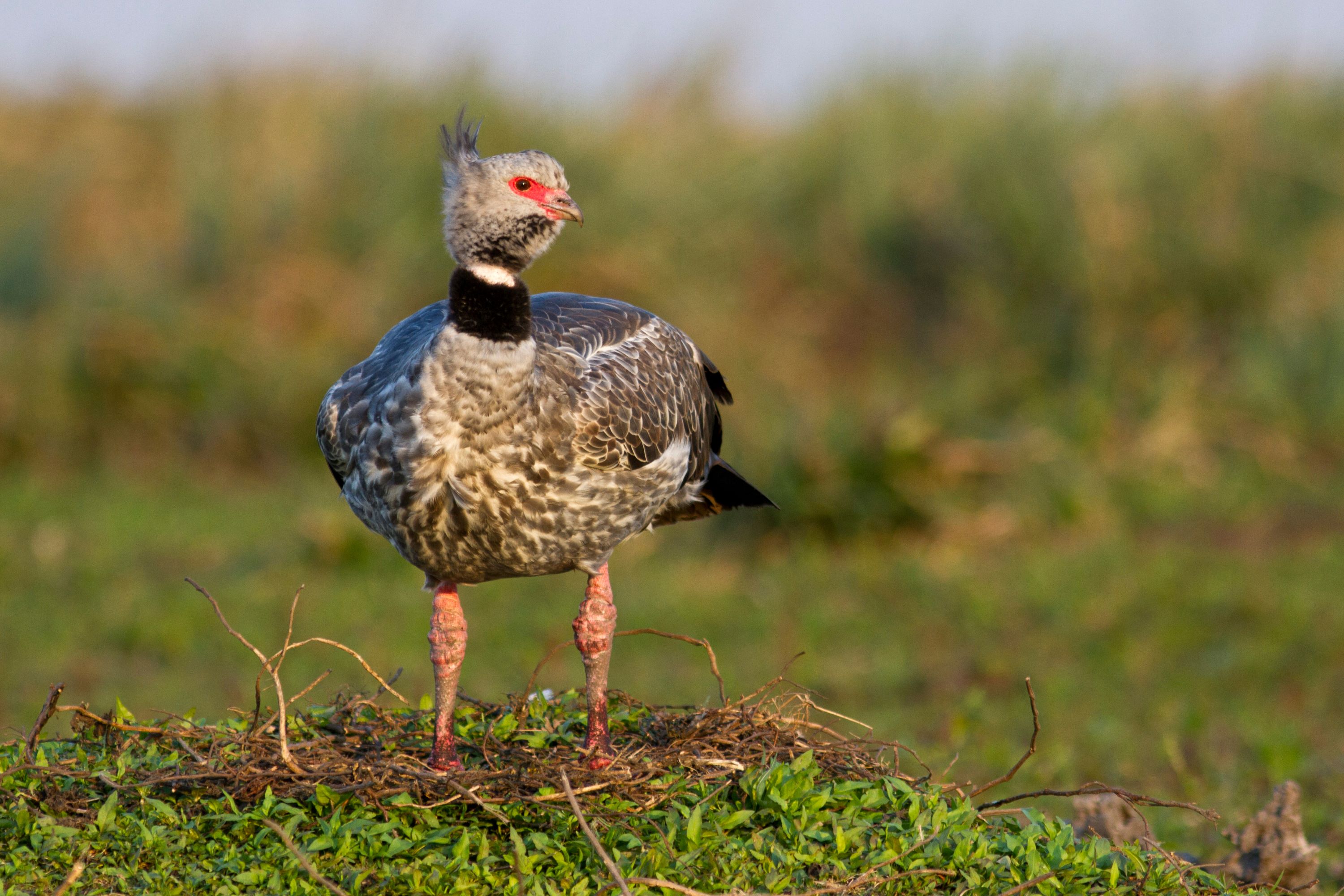
The Southern Screamer (Chauna torquata)
The Southern Screamer, or Chauna torquata, is an impressive and unique bird species native to South America, particularly thriving in the wetland areas of Brazil, Bolivia, Paraguay, Uruguay, and Argentina. Characterized by its large size, with some individuals reaching lengths of up to 37 inches, it is the largest member of the Anhimidae family. This species is easily distinguished by its robust body, long neck, and significant wingspan, along with a predominantly grey plumage that blends seamlessly into its marshy habitats. The Southern Screamer's distinct appearance is further accentuated by red skin around its eyes and a strong, hooked bill, making it a striking figure in the diverse South American wetlands.
Adapted to life in a variety of wetland environments, the Southern Screamer exhibits a remarkable ability to thrive in both terrestrial and aquatic settings. Its habitat preferences include lush marshes, sprawling swamps, and the edges of lakes and rivers, where it can readily find food and shelter. When foraging, the Southern Screamer is predominantly herbivorous, feeding on a mix of leaves, stems, seeds, and aquatic plants. This diet is essential not only for the bird's nutrition but also for the health of the wetland ecosystems, as the Screamer's grazing habits help control and maintain the balance of vegetation. This ecological role underscores the bird's importance in maintaining the biodiversity and health of its native habitats.
In terms of social behavior, the Southern Screamer is known for forming strong, long-lasting pair bonds, a rarity among large bird species. These bonds are characterized by mutual care and cooperation, with pairs engaging in joint activities like nesting and rearing their young. Additionally, Southern Screamers are quite vocal, using a variety of loud calls to communicate with each other across the vast expanses of their wetland homes. These calls serve multiple purposes, including establishing territory, attracting mates, and signaling alarm, and are a key aspect of the bird's social dynamics. The Southern Screamer's presence in the South American wetlands is not only a testament to the ecological richness of these habitats but also highlights the importance of preserving these areas for the continued survival of diverse and unique species like the Southern Screamer.
Anhimidae in Utah
None of the Anhimidae species are native to or typically found in Utah. The unique ecological and geographical requirements of these birds confine them to specific regions in South America. However, their distinctive characteristics and behaviors make them a subject of interest for birdwatchers and nature enthusiasts in Utah, offering a window into the diverse world of waterfowl.
Conclusion
The Anhimidae family, with its three remarkable species, offers a fascinating glimpse into the diversity of waterfowl. While these birds are not part of the Utah avian landscape, their unique adaptations, behaviors, and roles in their native South American wetlands make them an intriguing subject for anyone interested in the breadth of avian life across the globe. Understanding and appreciating the Anhimidae family expand our knowledge of the complex relationships between birds and their habitats, emphasizing the importance of preserving diverse ecosystems worldwide.